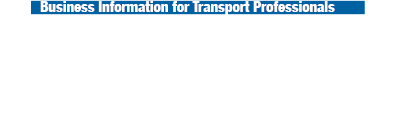Mastering the art of Number Plate capture
With high levels of interest in Automatic Number Plate Recognition (ANPR), it's little wonder that the technology is developing so rapidly
It’s easy to see why demand exists, almost all criminal activity will involve a vehicle at some point or another, and because number plates are inherently linked to identifying information, the ability to capture and retain these images can be indispensable. Following some high profile success stories in recent years, opportunities also exist in the areas of ITS, traffic management, congestion charging, tolling and parking.
There are opportunities to specify and install ANPR systems at every level – from simple access monitoring and access control to major urban projects. There are also significant retrofit opportunities for existing customers and lead-ins to new customers.
Whatever the application, the ability to offer customers a system that can capture vehicle number plates clearly, reliably and under virtually any conditions is a strong selling proposition. Whatever the application all ANPR based projects have one thing in common; the key to their effectiveness is the reliability and capture capabilities of the camera at the front-end.
Use dedicated cameras
End users will often try to push installers to fit ANPR cameras to play a dual role. They want a camera to capture number plates and at the same time provide surveillance for the surrounding area. As a rule this won’t work.
ANPR cameras have a difficult enough task when focused totally on capturing the number plate – ask it to cover a wider area and performance will be compromised. The camera will be unable to deliver the high-resolution number plate images the software requires and will certainly not be able to cope with changing environmental conditions.
Camera Positioning
Ideally site the cameras at pinch points or by control points like barriers where vehicles have less opportunity to travel at excessively high speed or at angles to the camera. The narrower the lane, the easier the capture; the camera should be positioned so as to give a horizontal field of view of no more than 3 metres to give an adequate number of pixels across the plate.
Consider traffic management issues to ensure a clear line of sight from the camera to the plate at all times. The camera should not be positioned too high above the road; the shallower angle, the better, ideally no more than 40 degrees. The distance to the centre of the lane determines the angle of incidence - this must also be less than 40 degrees, this provides the best possible number plate images for both playback and analysis.
High speed cameras for high speed cars
With a conventional CCTV shutter interval of 1/50 seconds a vehicle travelling at 60mph will move approximately 20 inches. Under these conditions the camera is not shuttering fast enough for the speed of the vehicle and the result would be a blurred image. A camera should be programmed to shutter at speeds of 1/1000 seconds to ensure the number plate images captures are high contrast, high resolution and suitable for use with intelligent software.
One camera, one lane
Installations have failed where a single camera has been set-up to cover more than one lane, in and out of a car park for example. Although the camera is dedicated to capturing the number plate, by attempting to cover too wide an area the image size and quality will be compromised. A single camera unit should cover a lane no wider than 3 metres, any wider and performance may be compromised, accuracy of the image is paramount especially if the system is to be used with intelligent software.
The importance of infrared
Infrared illumination plays a vital part in all successful number plate capture applications. The camera should filter out all the visible light, leaving only the infrared, which is used by the camera to solve the problem of glare caused by headlights, sunlight and wet road reflections. Using high intensity IR light in this way also helps the camera capture dirty or obscured plates.
Recording and compression
Compression is used by DVRs during the conversion from analogue to digital. While compression is fine for many applications it works by cutting the file size of each image to save on memory. Avoid compressing images too much as doing this reduces the resolution of the captured image and can render it unusable. Be aware that DVRs with black level drop out can occasionally report a false camera report fail.
Remember that good quality images are the key to successful number plate capture applications. A simple test is to play back the recorded images to determine if they are fit for purpose.
{mospagebreak}
Capture and recognition
Although these two terms are often confused and sometimes interchanged they are altogether different. ‘Capture’ refers to the process by which the camera obtains an image and is primarily concerned with imaging the number plate; it has nothing to do with recognition or interpretation in an intelligent manner.
‘Recognition’ – as in Automatic Number Plate Recognition – refers to the intelligent software process of reading, recognising and analysing the captured images. Optical character recognition (OCR) techniques are used to create an alphanumeric data string of the characters on the number plate, the data is then saved digitally and can be transmitted to a remote location using the Internet, wireless broadband or other transmission systems.
The digital record can be searched for, reviewed, compared to active database and used to trigger commands like opening barriers. Identifying whether a project requires capture or both capture and recognition at an early stage is essential.
Following the success of London’s congestion charging scheme, Intelligent Traffic Systems are set to become a common feature of many UK and European city centres. Publicity from such schemes will have a positive knock-on effect on, with demand likely to grow rapidly among smaller, private users.
Entry level systems are intended to ensure that should a crime be committed, the number plates of all vehicles entering or exiting the premises are captured and recorded. This information can then be supplied to the relevant authorities.
Almost every existing security system can benefit from the addition of an entry level ANPR system. A dedicated number plate capture camera should be regarded as a key camera in an overall surveillance set-up. Images captured by ANPR cameras, like traditional CCTV cameras, can be viewed and recorded to DVR for subsequent use.
Intermediate level systems are used to monitor and control the flow of vehicles in and out of a barrier or entrance, and have the added benefit of helping secure the premises against unwelcome visitors. The number plate is captured, intelligently read by software and then stored; it can then be compared to an existing database and used to activate barriers and signs.
Ideally suited for access control and security applications, features within the ANPR software can allow for searching of number plates, data and times. Information can be stored or a simple programme developed to analyse the data.
Advanced level systems will gather and act on specific information concerning the flow, speed or control of vehicles. Applications include congestion charging, traffic monitoring, car park management and motorway management enforcement cameras. This type of application tends to be specific to the client’s need and will demand additional hardware and software interaction with the client’s system.
The quality of the number plate image is the most important factor, it is key to any successful ANPR system and every aspect of the installation should be designed with this in mind. In more advanced installations, where intelligent software is used to process number plates, the quality of the images becomes even more important.
The system will need to deal with a totally different set of image-quality challenges – dirty number plates; vehicles moving at speed; headlights and the challenge of changing light and environmental conditions.
Further information
www.derwentCCTV.com
Please register to comment on this article

